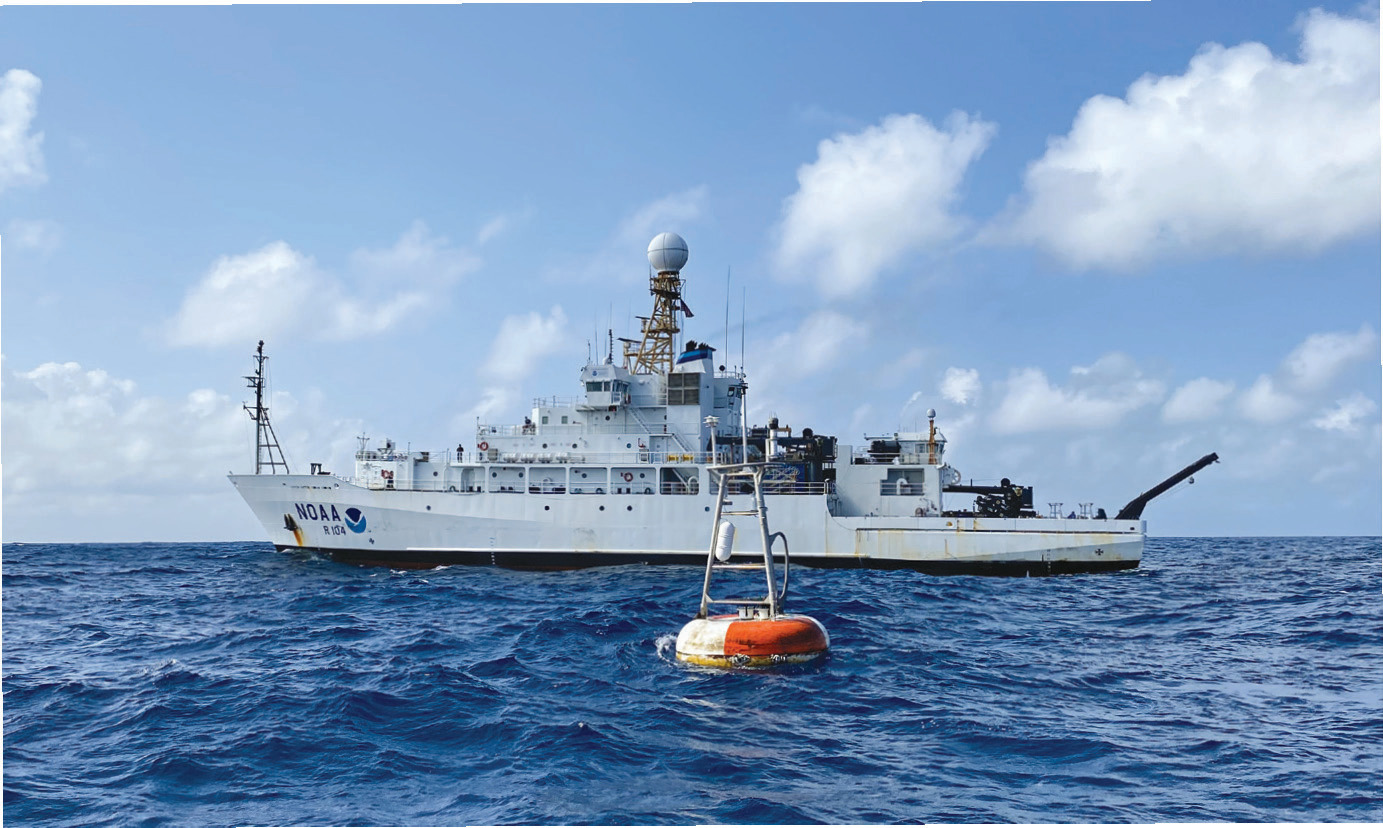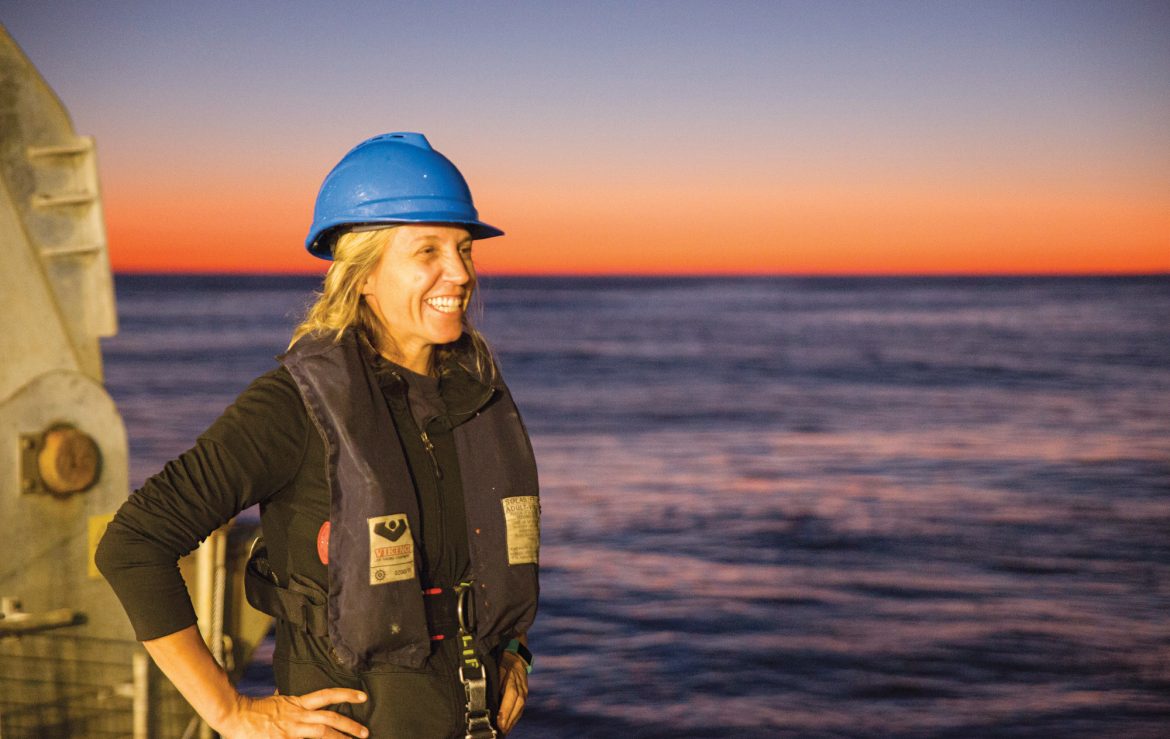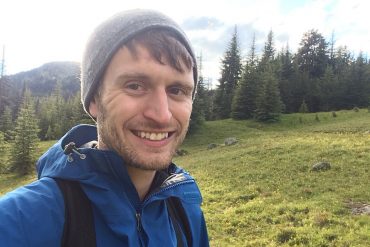Interview by Keith Moore
NOAA scientist Tara Clemente on how oceans can help us predict severe weather events
During a year of unprecedented record-high temperatures, we caught up with Tara Clemente, operations manager for the National Oceanic and Atmospheric Administration’s Pacific Marine Environmental Laboratory and Global Tropical Moored Buoy Array (GTMBA), a project through University of Washington Cooperative Institute for Climate, Ocean, and Ecosystem Studies (CICOES).
GTMBA is a multinational effort to provide data in real time for climate research and forecasting, with buoy arrays in the Pacific, Atlantic and Indian oceans.
What data do GTMBA’s buoys collect?
GTMBA’s goal is to design, develop and sustain moored-buoy observing systems in the tropics for climate research and forecasting. GTMBA’s buoys collect surface meteorological data on wind, air temperature, relative humidity, rainfall, barometric pressure, longwave and shortwave radiation and subsurface seawater measurements of temperature and salinity at 10 depths between zero to 500 meters, along with ocean currents. The collaborative multinational sustained moored buoy observations in the tropics allows for climate research and forecasting in the Atlantic, Pacific and Indian oceans. The major phenomenological foci of this array are:
- El Niño/La Niña Southern Oscillation (ENSO) in the Pacific Ocean.
- Hurricane activity, the interhemispheric dipole mode and equatorial warm events in the Atlantic Ocean.
- The monsoons, the Indian Ocean Dipole, and intra-seasonal variability in the Indian Ocean.
What are the real-life applications for that data?
The ocean covers 71 percent of our planet’s surface. We are increasingly recognizing how much we rely on the oceans to support human life and our economic, social, cultural and environmental wellbeing. Ocean observing is essential for a better understanding of how society and life on earth is affected by climate change. The information gathered is invaluable to policymakers and individual nations, guiding them to make change at a global, regional and local level.
Ocean observing programs like GTMBA were developed to better 45 understand and predict climate variations and ocean-atmospheric interactions that affect regional weather and climate variability on seasonal, inter-annual and longer time scales. It can also help deliver early warnings of hazards. Climate and weather forecasting can help countries prepare for altering patterns in rainfall, wind and temperature that can lead to droughts, floods, severe tropical storms, hurricanes, monsoons and wildfires affecting agriculture, fisheries, transportation, resource management, energy production along with other ecological and socio-economic impacts.
What data trends do you find most troubling or interesting?
These ocean mooring systems have given us great insight into long-term trends. I think one interesting finding is the increasing frequency of extreme El Niño events due to greenhouse warming. Extreme El Niño events severely disrupt the global weather patterns, affecting ecosystems, agriculture, tropical storms, droughts, wildfires, flood and other extreme weather events worldwide. Modeling predictions shows a doubling in the occurrences in the future in response to greenhouse warming. The increased frequency arises from a projected surface warming over the eastern equatorial Pacific that occurs faster than in the surrounding ocean waters. (www.nature.com/articles/nclimate2100 and www.doi.org/10.1002/9781119548164.ch21)
Are there any data trends that are positive?
I’m unable to comment on this, since I am still new to the program, but I think one positive is our ability to use the data to forecast and look at long-term climate trends.
What message should we all take from your research?
In order to collect long-term views of these and other processes at work in the ocean, scientists and engineers have devised ways to leave instruments out in the environment. Moored observatories, secured by wires, buoys, weights, and floats, such as the ones deployed by GTMBA are platforms which allow us to observe how ocean properties change over time. I think one important takeaway from the research of an ocean-observing program like GTMBA is in the value of time-series measurements. Time-series measurements are a group of observations on a single entity over time. If you go out and sample the ocean once, it gives you a single data point with no context. But if you go out and sample the same part of the ocean monthly, weekly, daily, hourly or on even shorter time scales, such as in real time, which is how some of our moored buoys can collect data, you can start to build a picture and see long-term trends in data. It’s this ability to string together many data points over time that allows scientists to form climate predictions and forecasts that can help predict events such as when the next ENSO will occur.

Do geopolitics play any role in data interpretation between partners from different nations?
Programs like GTMBA could not happen without international partnerships. The world population depends on rainfall for agricultural production, so improving our understanding and ability to predict the monsoons, tropical storms, hurricanes and droughts has been a longstanding objective of the international scientific community.
After twenty-one years in Hawaii, how does Seattle feel to you?
Hawaii has a special place in my heart and will always feel like home to me, but Seattle and the Pacific Northwest have welcomed me with open arms. I’ve eternally been drawn to the oceans and mountains, of which Hawaii and Washington both have in abundance. My heart belongs to the sea, and I love spending time on research cruises studying and collecting data to better understand our oceans and the enormous role they play in controlling our climate. After long trips at sea, however, I find myself yearning to head into the mountains where I can continue to take in the solace, beauty and grandeur of nature. Living in Hawaii for twenty-one years, and now Washington, has been more than I could ever have imagined. I feel incredibly grateful and lucky.







